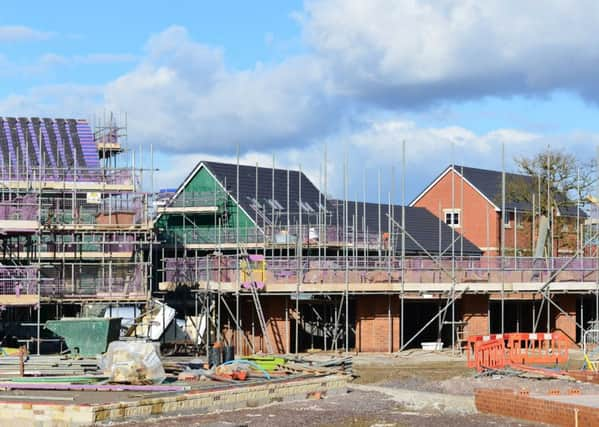Peterborough struggling to find enough affordable homes for low-income households according to new data


In the 12 months up to March last year, 1,284 families or individuals were placed in social and affordable housing, but thousands more remain on the waiting list, figures from the Ministry for Housing, Communities and Local Government show.
As of April 1, 2017, there were still 3,119 applicants waiting for social housing.
Advertisement
Hide AdAdvertisement
Hide AdThe number of people who were successful in securing affordable accommodation has been declining in recent years. Five years ago, 1,888 people were placed in affordable housing, a 32 per cent decrease in the number of offers made.
When making housing decisions, councils and housing associations will assess a person’s income, family status and their connection to Peterborough, as well as other factors.
Two types of rented property are offered in social housing. Social rents are usually no more than 50 per cent of the market rate and are set nationally.
Affordable rents are significantly higher, generally between 60 per cent and 70 per cent of market rates, and are set locally.
Advertisement
Hide AdAdvertisement
Hide AdIn Peterborough, the majority of new housing offers (86.4 per cent) were for social rent.
Social housing is managed by councils and housing associations, which are independent not-for-profit companies. Both are failing to build enough new homes to keep up with demand, and the figures show the most common reason for a social home becoming available was because the previous tenant had moved.
In the 12 months to March 2017, 150 new affordable homes were completed in Peterborough.
And no new homes for social rent were built in 2016/2017.
A spokesperson for Peterborough City Council said: “The reduction in the availability of housing since April 2016 is well documented and has contributed to a rise in homeless numbers in the city as well as a large housing waiting list.
Advertisement
Hide AdAdvertisement
Hide Ad“We are actively working to resolve these issues and have recently pledged substantial investment to provide new temporary and permanent homes in the city.”
Nationally, housing associations and councils let 334,602 homes for below market rent in 2016/17, down from 374,586 a year earlier, a drop of 11 per cent. This is the lowest level since records began in 2007.
The figures demonstrate a long-term decline in the availability of social housing. According to analysis by the Chartered Institute of Housing, 150,000 homes for social rent have been lost in England since 2012.
Most of the losses were down to social homes being converted to affordable rent or being sold through Right to Buy, which allows tenants to cheaply purchase their home from the council.
Advertisement
Hide AdAdvertisement
Hide AdChief executive of the institute, Terrie Alafat, said: “For many people on lower incomes, the only truly affordable option is social rent. It is simply unacceptable that we are losing so many of our most affordable homes at a time when more and more people are in need.
“Government investment is still heavily skewed towards the private market. Our analysis shows that 79 per cent of the housing budget up to 2020/21 is directed towards private housing, with just 21 per cent going to affordable housing.
“Rebalancing this budget, so that more money is spent on affordable homes, could make a big difference.”
RELATED